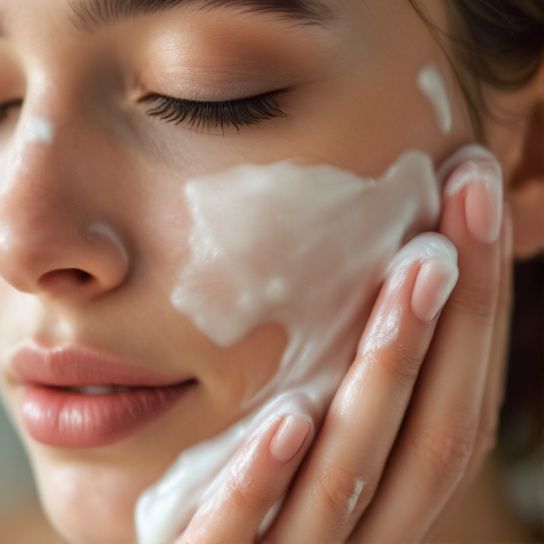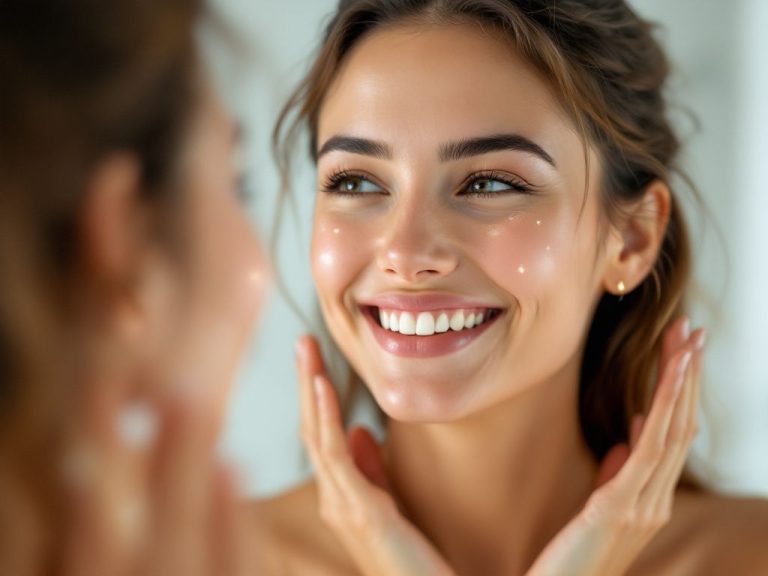Ever stepped outside feeling like you’ve walked into an invisible sauna, and your skin immediately protested with a breakout the next day? You’re definitely not alone. Welcome to the battle of acne vs. humidity! It’s an environmental dilemma that affects many of us, especially as the seasons shift or when traveling to climates different from our own familiar weather backyard. Let’s dig into how this pesky humidity is actually affecting your skin, and more importantly, what you can do about it.
Table of Contents
ToggleThe Humidity and Acne Connection
Humidity, what a curious phenomena! It’s essential for life—helps plants, affects your mood, even influences indoor air quality—but for your skin, particularly when you’re prone to acne, it’s not all sunshine and rainbows.
So, what’s really going on with acne and humidity? To put it simply, humidity means more moisture in the air. When this extra moisture hangs out on your skin, it can create a bit of chaos. Your skin’s natural oil production goes into overdrive, mixing sweat, bacteria, and dead skin cells into a pore-blocking cocktail. Voilà, acne is more likely to rear its head. And, trust me, that’s about as fun as it sounds. On the flip side, very low humidity can strip your skin, leaving it dry and prone to irritation—obviously not the goal either.
Let’s take a slow stroll through how exactly this oily mess happens.
How It All Begins: Moisture Balance
Your skin loves balance. Too dry, and it gets cranky and flaky. Too wet, and it rebels. In cooler weather, the air is usually less humid. But crank up the temperature and suddenly, you’re in the tropics, whether you want to be or not. Increased humidity levels mess with your skin’s ideal moisture balance, which for many of us means acne surprises.
—
A Closer Look at Skin Anatomy
**Sebaceous Glands:** They’re a bit like hyperactive factory workers cranking out sebum—your skin’s natural oil. More humidity, more work. They’re convinced they’re doing you a favor, but all that extra oil can plug up your pores fast.
**Sweat Glands:** Sweat helps cool us down. However, mix sweat with excessive oil and both end up clogging things right up, leading to acne.

**Pores:** The microscopic gateways of your skin. When they get blocked, undesirables like bacteria have a field day creating painful pimples.
—
Weather Effects and Your Skin Type
Not all skin is created equal. Understanding what your particular skin type needs when faced with different weather effects, like varying humidity levels, can save a lot of future stress.
Oily Skin Friends
If you have oily skin, then higher humidity might feel like a personal attack. The greasy shine, and the unending hassle of blotting papers—you know the struggle. What works? A closer look at gentle cleansing routines and non-comedogenic products will do wonders in high humidity climates.
Dry Skin Companions
For those with dry skin, humidity can strangely feel like a relief. It’s like finding an oasis of moisture. Still, too much humidity can start your oil glands churning before shifting the situation: dewy to dull to dreaded breakouts.
The Combination Crew
The trickiest of them all. If your skin can’t decide if it’s dry or oily, it’s because it’s both, sneaky little thing. Combination skin can require a bit of a dance—hydrating but not adding to the oil pool that humidity has created.
—
Environments and Unexpected Acne Triggers
Humidity plays a massive role when you find yourself in different environments. It’s not just the equator that heightens skin turmoil, there’s also your home turf: your (humid) friends’ place, your aunt’s tropical ten stories up, or, for the adrenaline-seeking soul, highland hiking trips. Yup, location’s typically the culprit.
Urban Habitats

Cities are infamous for pollution and particles posing risk. When these mix with humidity, the resulting concoction turns into grime central—call it “smog-cne,” if you will. Finding a cleansing routine to combat pollution’s effects becomes essential. More later on creating a good home base for acne-thwarted skin.
Nature Wonderland
While the great outdoors and mountains offer the cleanest of air, local humidity levels can still spike, especially during certain seasons or near water bodies. Environmentally-conscious skincare strategies tackle both acne/humidity troubles while keeping aligned with eco goals.
Indoor Ecosystems
Indoor environments have new beasts—air conditioning or central heating—balancing out low humidity situations. Dryness, in this case, is just as worthy of a knock-out skin routine tailored to your daily digs and mitigate unnecessary stressors from environmental impacts.
—
Real Talk: Overcoming Acne from Humidity Conditions
Seriously. How do you tackle acne exacerbated by mother nature? Below are tried and tested strategies to bring your skin back in line while keeping things environmentally friendly. Trust me on this one, these steps go from breaking acne’s cycle to maintaining control consistently.
Simplified Skincare Routine
- Gentle Cleansing, but don’t overdo it! Twice-daily is usually plenty. Over-cleaning risks stripping away natural barriers, encouraging your glands to up the oil ante while trying to compensate.
- Exfoliation, only sometimes! This isn’t a day-to-day slog, but regular gentle exfoliation helps remove dead skin cells that block pores. Be kind with your exfoliation weapons of choice.
- Moisturize Properly. Find non-comedogenic products that work with your skin’s oil levels instead of against them, providing hydration particularly suitable for humid or fluctuating weather effects.
- Sunscreen, sunscreen, and yes, sunscreen. Even amidst moisture battles, protection against UV rays heads off future battles like hyperpigmentation.
- 5. **Active Ingredients Savvy. Salicylic acid takes the prize for acne-prone skin in need of effectivity as it dislodges blockages and fights inflammation beneath the surface.
—

Keep The Environment in Mind
Keeping your choices environmentally conscious isn’t just a matter of trendy knowledge—it’s part of responsible wellness. Select sustainably-harvested or locally-sourced products to go about acne attribution with a sustainable twist.
DIY Humidity Monitors and Indoor Air Care
**Humidity Tracking:** Begin simply by placing basic hygrometers around highly frequented spaces. They help observe any unexpected climbs or troughs promptly allowing skincare adaptation to that information.
**Indoor Environment Adjustments:** Air purifiers and essential vents keep particle monsters at bay, promoting cleaner atmosphere conditions equally valuable necessary.
**Deep Breathing and Relaxation Practices:** Direct emphasis naturally dissipates lingering tension. Younger and mature folks united in stress management efforts prove advantageous overall.
Lifestyle Tweaks
- Hydration and Diet: Drinking plenty isn’t just goodwill advice; it maintains your body and skin’s moisture levels. Steer clear of overly processed foods that incite inflammation faster than you can say ‘sugar rush.’
- Fitness & Natural Sweating: Exercise increases right kind of sweat flow (toxin-free), and, combined with quick showers aftwards, helps manage overly greasy buildups.
- Restful Switch-offs: Listen actively to mind-methodologies prioritizing beauty sleep assure hormones lower, reduce stress-related flare-ups afflicting.
Keeping Acne Tab from Reality Check
Oh, don’t worry; I’m not offering magical promises. Accept a breakout will happen sometimes, that happens. Should you continue to encounter severe acne prompted exclusively due humidity changes, speaking with dermatological talent ensures comprehensive approaches customized properly authority-in-tune experience conveyances significant relief.
Then there you have it! Humidity doesn’t have to moisten your moxie. Simply predicting triggers further enhances steps combating acne it generates. Mixing environmental savvy with shrewd self-care guides, confidence outshines clouded cheeks. Remember, jawline clarity’s your ally wherever you sojourn amidst weather-wrought prospects alive and thriving!
Frequently Asked Questions
Does High Humidity Directly Cause Acne?
High humidity does not directly cause acne, but it can create conditions that are conducive to breakouts. Increased moisture in the air can lead to more sweat and oil production, which can clog pores and result in acne[1][3][5).
How Does Humidity Affect Different Skin Types in Relation to Acne?
For people with oily skin, high humidity can worsen their skin condition by increasing oil production, leading to clogged pores and more frequent acne breakouts. In contrast, those with dry skin might benefit from higher humidity levels as it can hydrate the skin, but excessive moisture can still disrupt the skin’s natural balance[1][4][5).
What Skincare Adjustments Should Be Made in High Humidity to Manage Acne?
In high humidity, it is recommended to use lightweight, non-comedogenic skincare products, cleanse your skin more frequently, and opt for gel-based moisturizers to manage increased oil and sweat production. Additionally, using products containing salicylic acid, Mandelic Acid, Alpha Lipoic Acid, and niacinamide can help control oil production and fight acne-causing bacteria[1][3][5).
Can Low Humidity Also Affect Acne, and If So, How?
Yes, low humidity can affect your skin by causing it to dry out. This dryness can prompt the skin to produce more oil to compensate, potentially leading to clogged pores and acne. Thus, both high and low humidity can exacerbate acne issues, albeit through different mechanisms[1][3][5).
References- Exposed Skincare. (2023). Does Humidity Cause Acne?.
- Vasseur Skincare. (n.d.). Battle the Breakouts Humidity and Acne.
- Schlessinger MD. (2024). Managing acne in humid weather.








